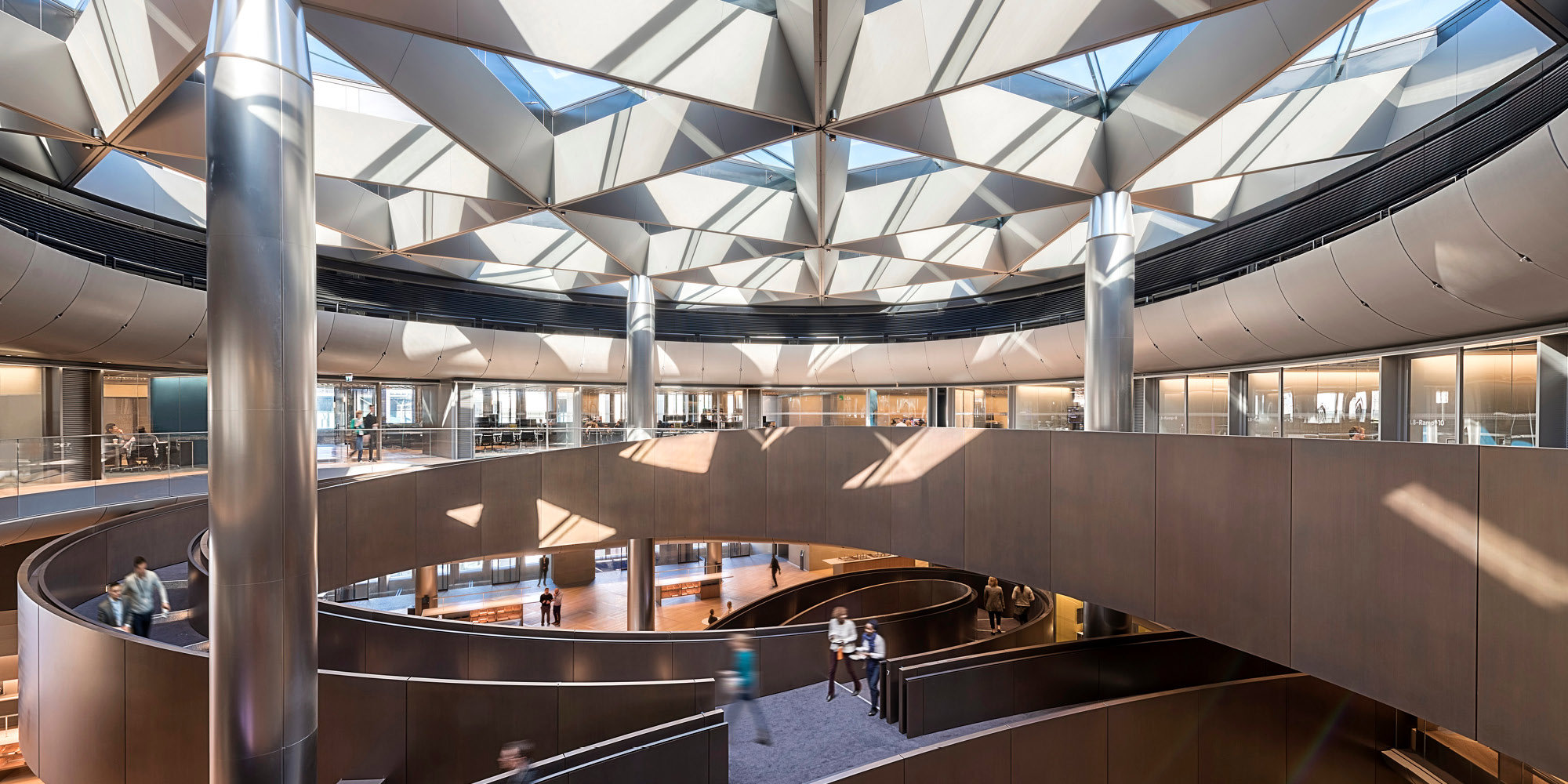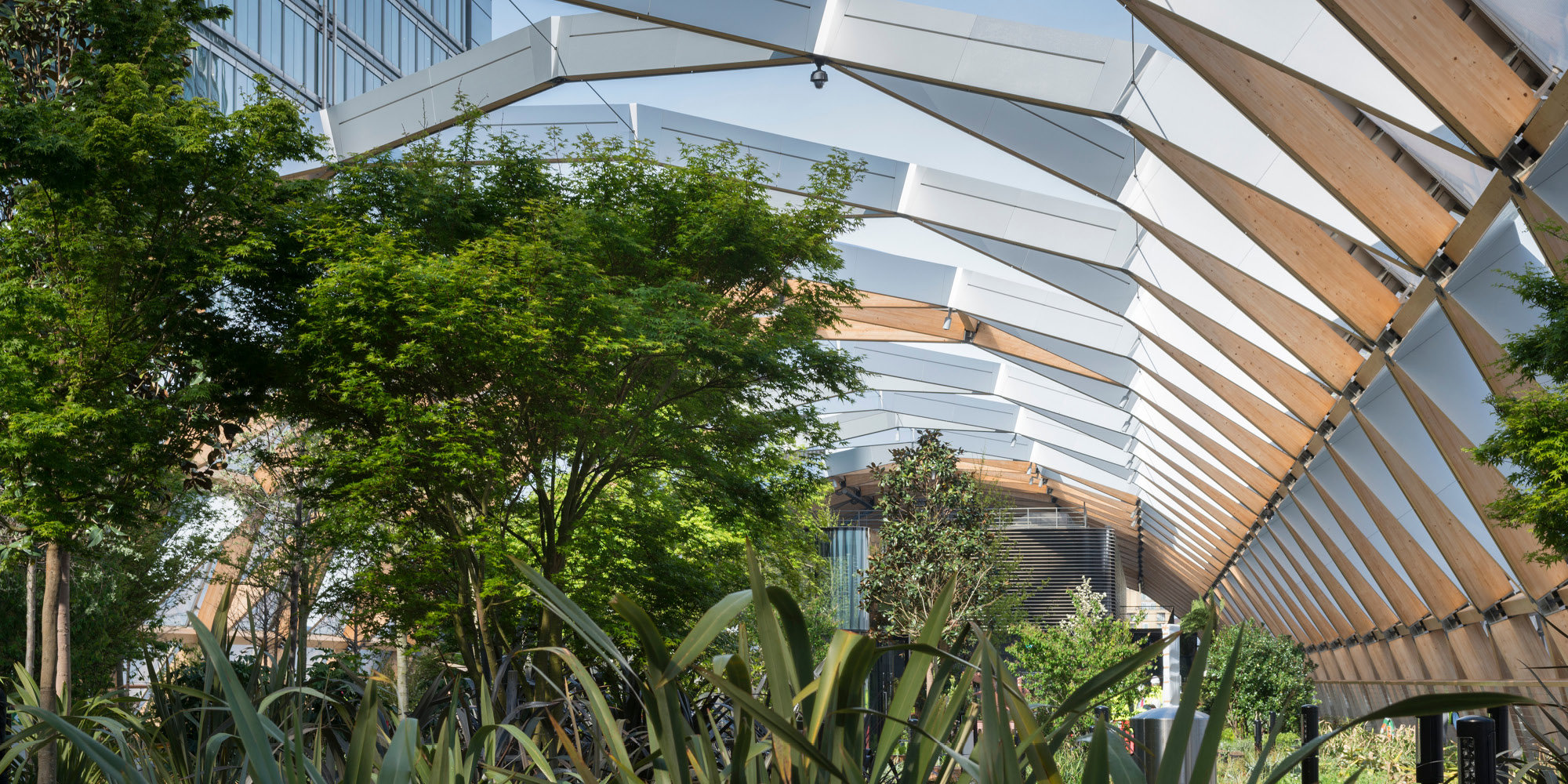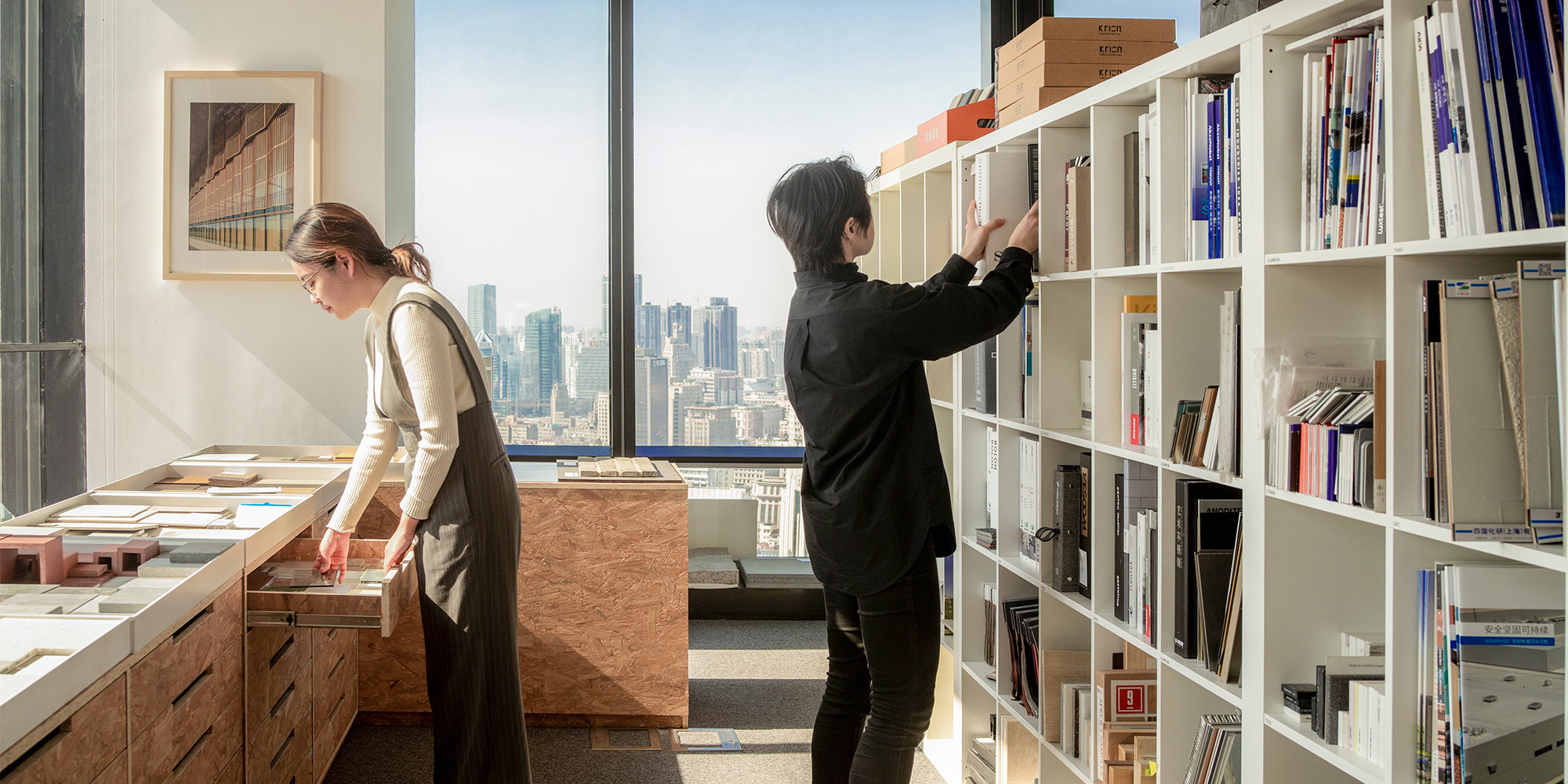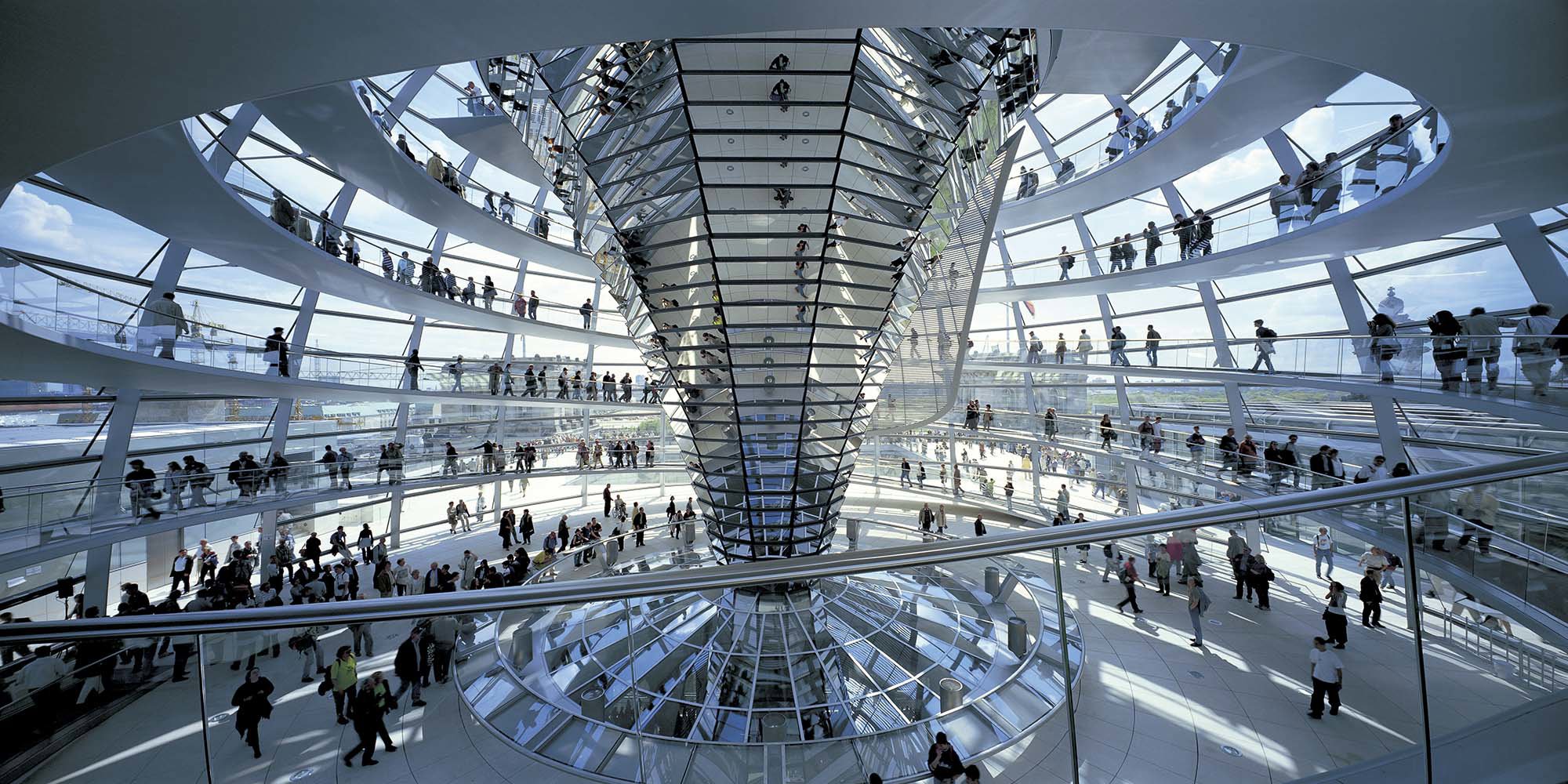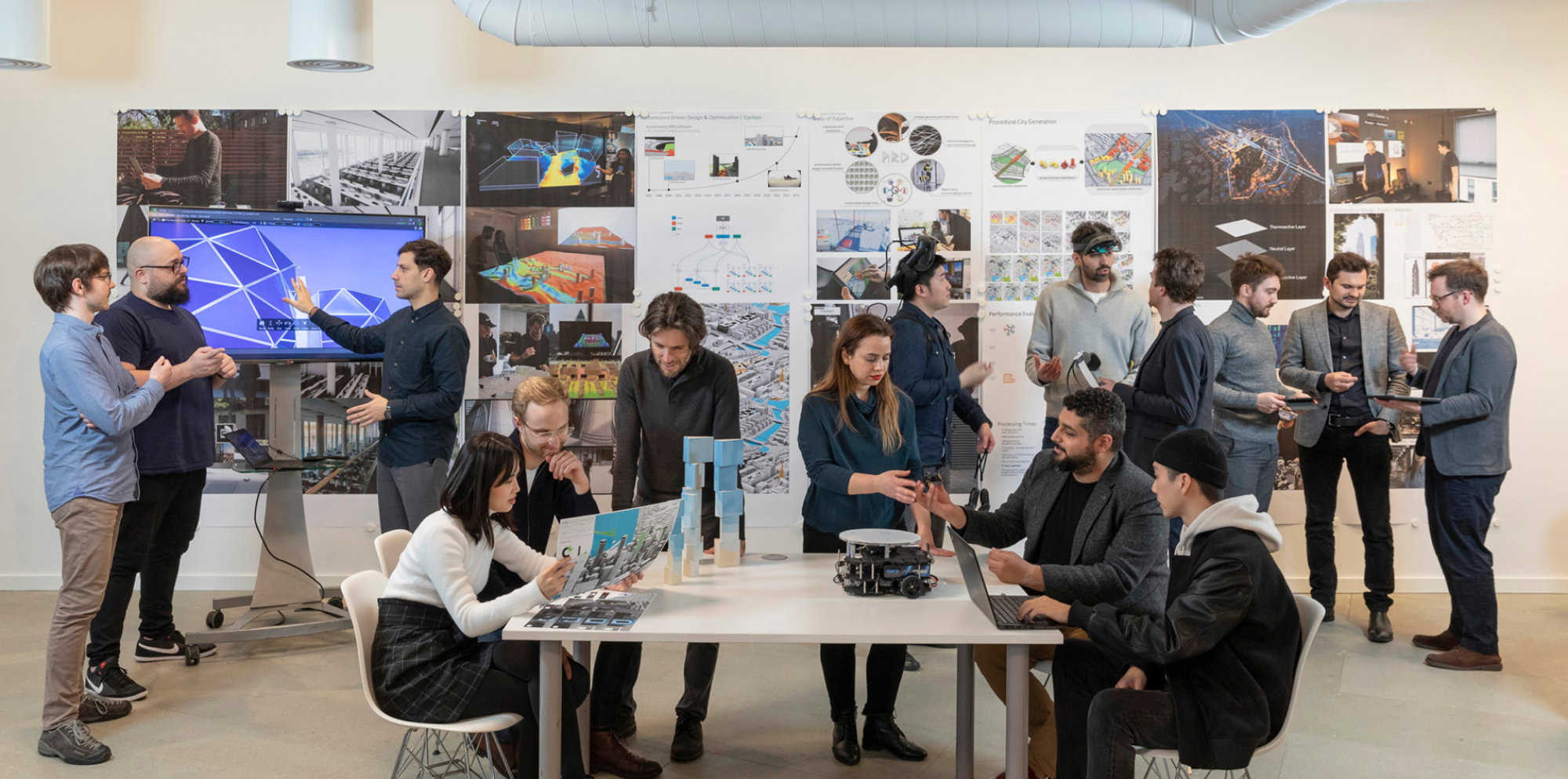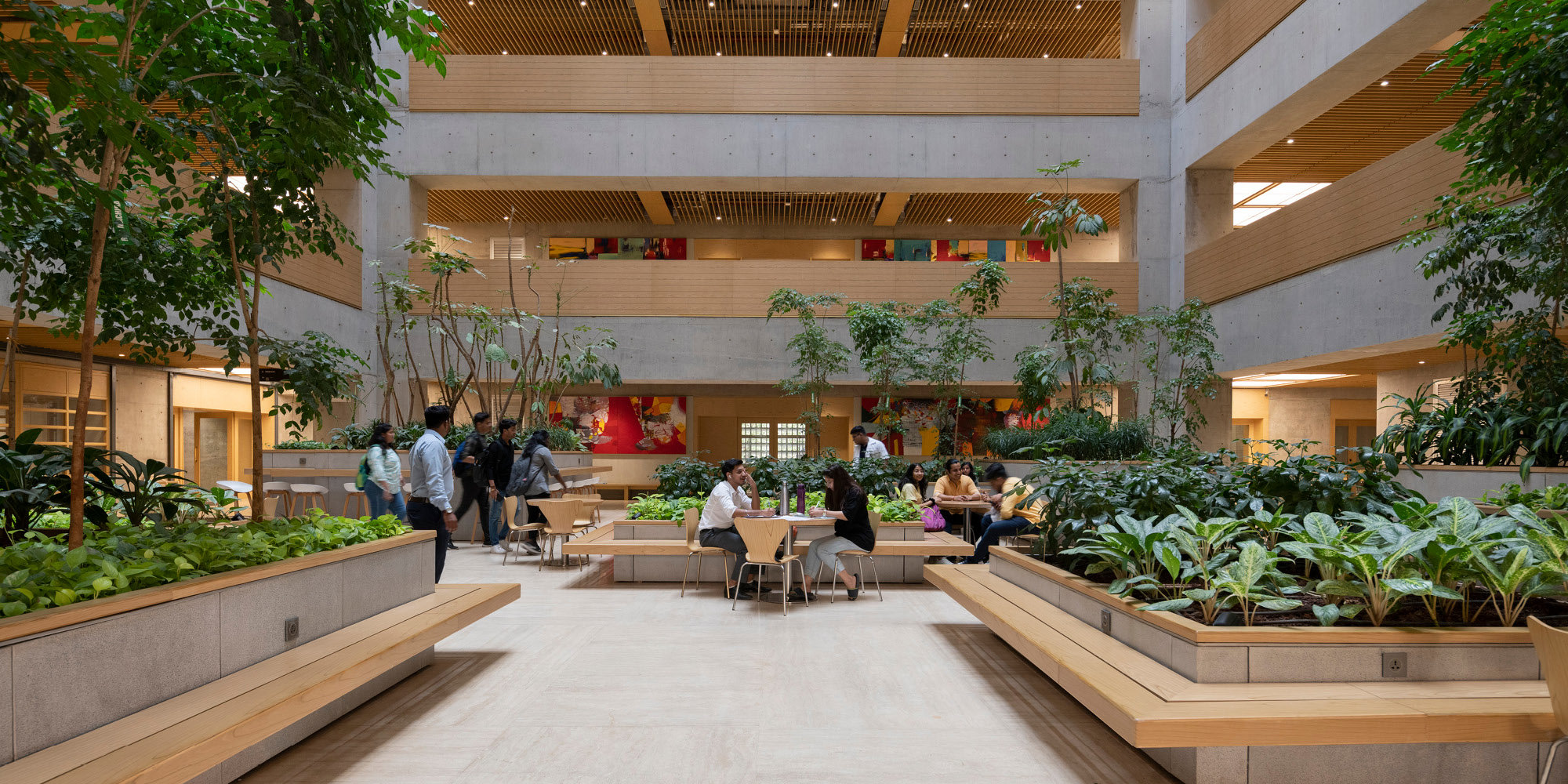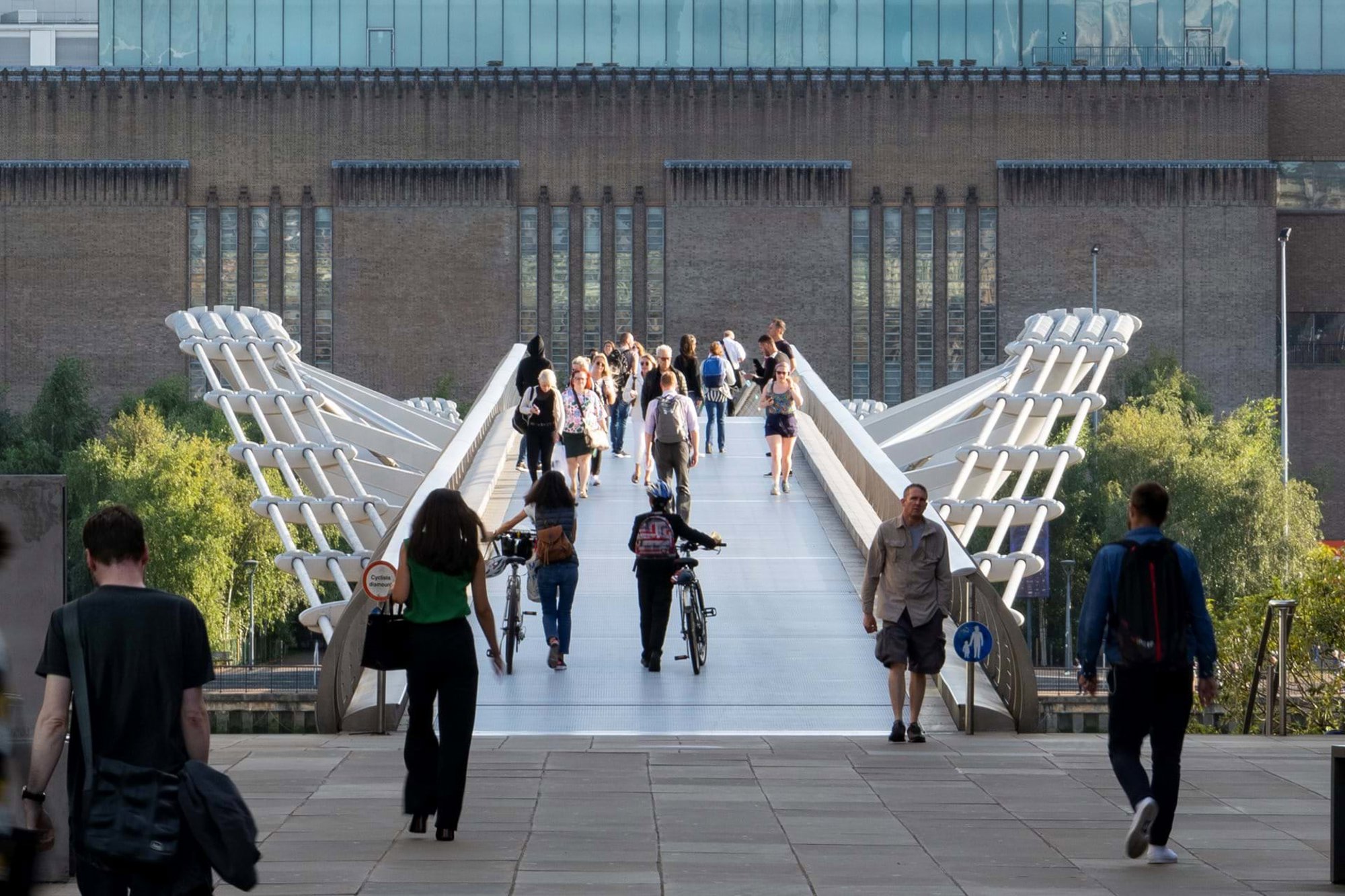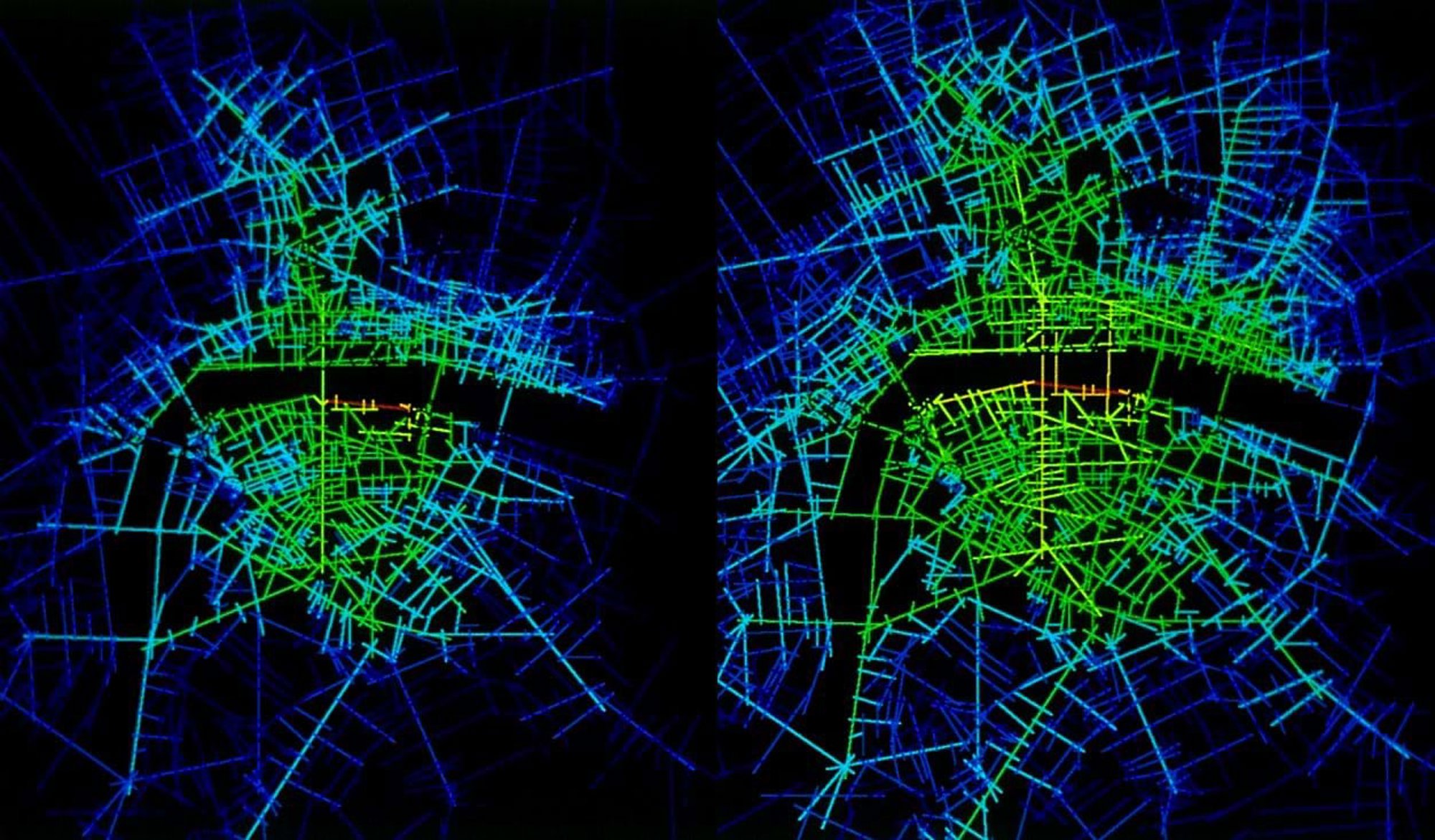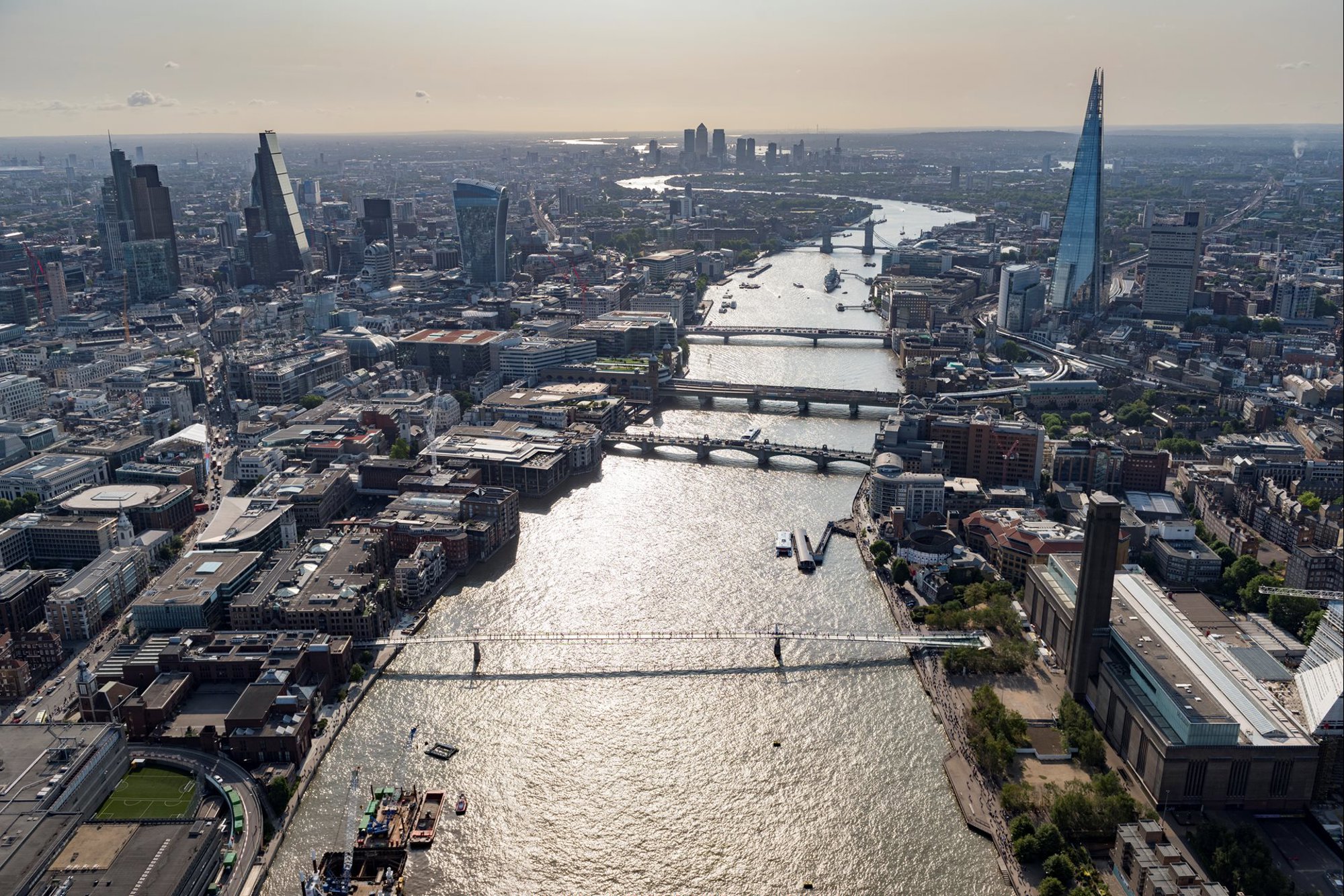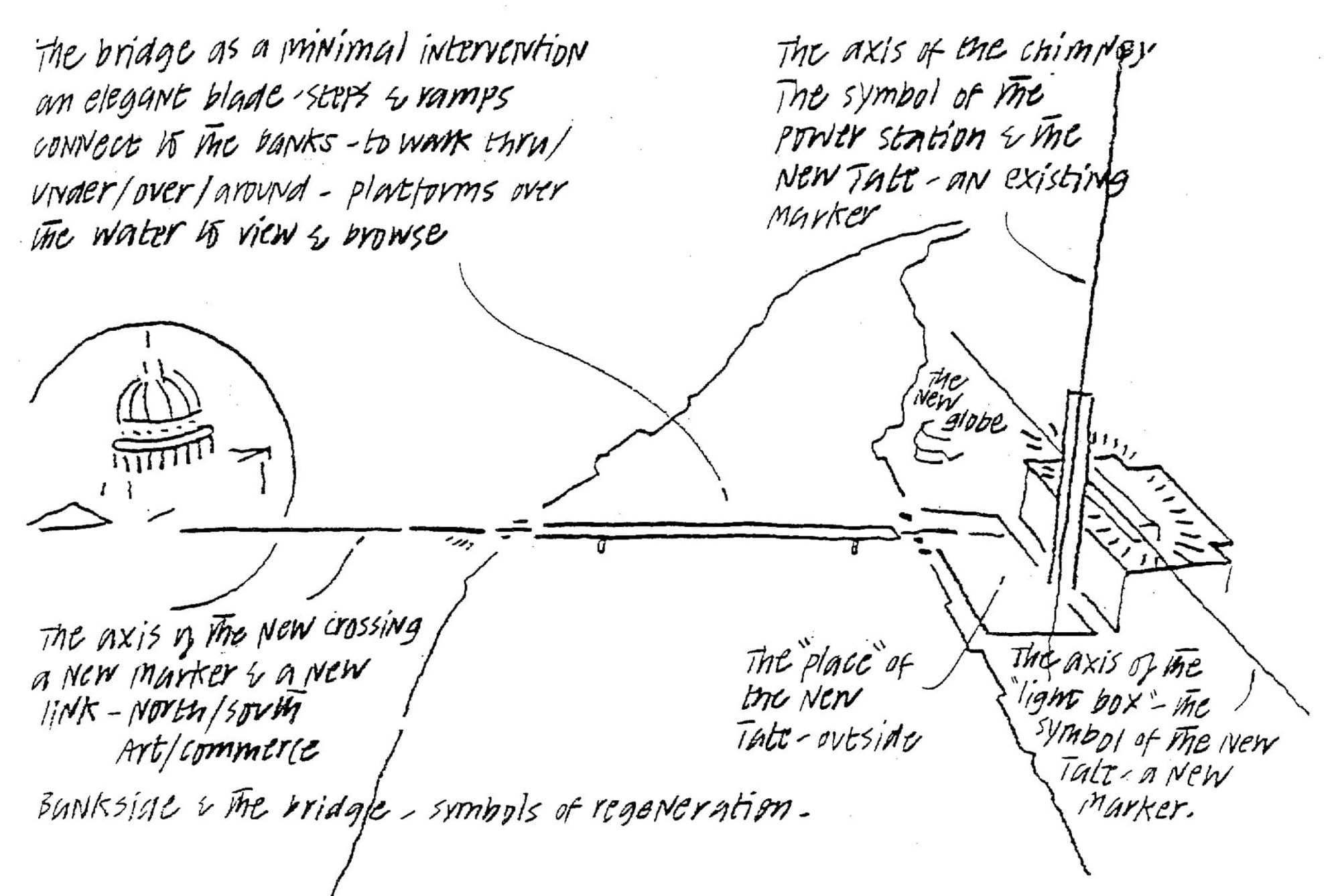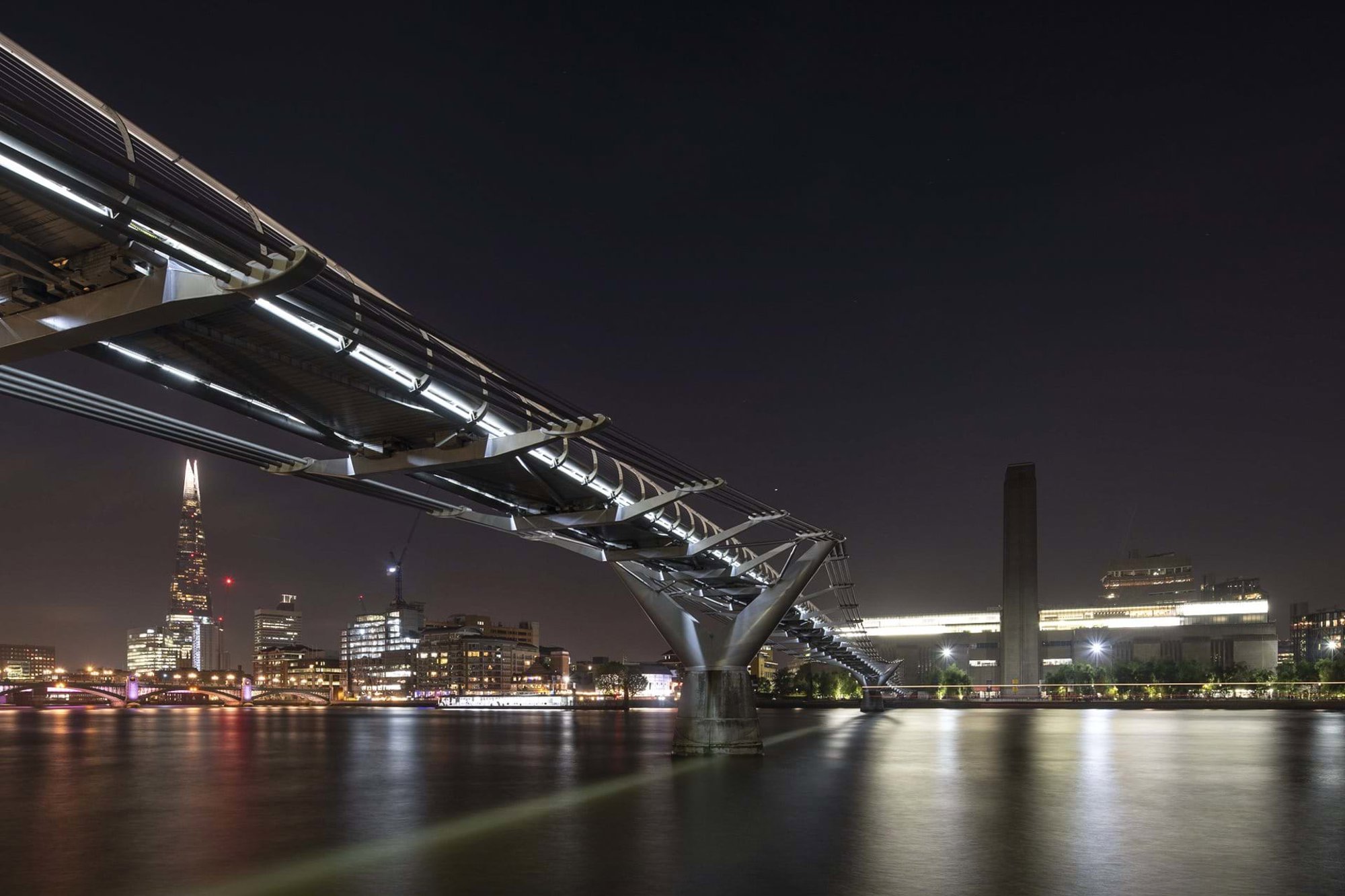As the Millennium Bridge celebrates its twentieth anniversary this year, renowned British critic and curator Deyan Sudjic reflects on how Foster + Partners’ singular infrastructural intervention ushered in a new era of increased interconnectivity in London.
4th December 2020
The Millennium Bridge at Twenty
Of all London’s bridges, just two of them count as genuine landmarks, distinctive enough to be recognised around the world. Tower Bridge, of course, and the youngest, and perhaps the most minimally elegant of all of them: the Millennium Bridge. In just twenty years, the Millennium Bridge has become an essential element in the city’s landscape, a part of its identity, popular not only to use as a bridge, but also as a destination in its own right.
If geography is an exploration of the measurable aspects of our relationship with the material world, then psychogeography is a less tangible but more resonant reflection on our emotional interactions with the urban environment. The term was coined by Guy Debord the radical French philosopher, and taken up by such disparate British writers as JG Ballard, and Will Self, and then in film by Patrick Keiller. To appreciate the full impact of the Millennium Bridge on London over the past twenty years, you need to look at it from both of these perspectives.
The Millennium Bridge has become an essential element in the city’s landscape, a part of its identity.
The bridge is, of course, a large physical object that allows city workers to walk to Borough Market for lunch, or tourists to take in a tour of St Paul’s and a visit to the Tate Modern in the same morning. It is also an experience in itself, offering a chance to look at London from a vantage point above water, and free from the noise of traffic. Famously, it was briefly a place for brave spirits to go for a rather different kind of experience: the ‘wobble’, caused by what engineers call ‘synchronous pedestrian footfall’. For a while, some even regretted that the 70-millimetre (2.8-inch) sideways sway was quickly fixed with the invisible application of shock absorbers and tuned mass dampers.
The popularity of architecture or infrastructure can often be informally measured by its adoption into the push and pull of urban life. At the Bridge, city authorities resorted to retrofitting ball-shaped obstacles that infamously deck every barrier and handrail at its approaches – like bracelets – to discourage skateboarding. And staff from the Tate used its northern threshold as a surface on which to chalk slogans protesting against Covid-19 related redundancies at the museum. These adoptions and adaptations are evidence of its role as part of the public realm; it has become a place to send a message.
The whippet-thin bridge, which seems to exude a kind of restless energy, is an object that, despite the effort that it makes to keep from interfering with the sublime view of St Paul’s from the Thames, has changed the way that London looks, works and feels. That is partly because of its physical presence. It is a kind of umbilical cord connecting north and south banks of the river. It has brought life both to the previously empty north bank, where the tourist crowds once went no further than the churchyard boundary of the cathedral, and to the Southwark side of the river. But it has also changed the way in which we think about London and how we understand the experience of moving through it.
The bridge is literally and metaphorically – and with a force of 2,000 tonnes – pulling the two sides of London together.
The fundamental structural principle of a suspension bridge – and that is what the Millennium Bridge is, albeit an exceptionally shallow one – is that cables are held in tension to support the deck and the weight of the traffic on it. In this case, the cables, anchored in concrete on the north and south sides of the river, have been designed to handle the weight of 5,000 people at any one time, while never rising more than 2.3 metres (7.5 feet) above the deck of the bridge, which itself is just four metres (13 feet) wide. In other words, the bridge is literally and metaphorically – and with a force of 2,000 tonnes – pulling the two sides of London together.
The Millennium Bridge on a busy summer’s day, looking south towards Bankside. More than four million people use the bridge each year. Developed with sculptor Sir Anthony Caro and engineers Arup, it is London's only pedestrian bridge and the first new Thames crossing since Tower Bridge in 1894. © Nigel Young / Foster + Partners
According to property experts, the central London office market can now be defined by analysing the geography of four places: the West End, the City, Midtown and East London. They describe London Bridge and Waterloo as constituent parts of the City, with the Millennium Bridge at the centre. Twenty years ago, it is inconceivable that they could have been defined in such a way. That they can now be presented so confidently as part of the City is a measure of how much more fluid London has become and not just a fanciful idea put forward by property agents. Consider, for example, that the Financial Times sold Bracken House, its headquarters under the shadow of the dome of St Paul’s, in 1988, moved to Southwark Bridge Road, and thirty-one years later went back to Bracken House, replacing the Japanese bank that had based itself there in the intervening period. The geography of a city that was once rigidly divided between its north and south banks, has fundamentally altered.
A more complex geography
One result of having had a London childhood is that I have a mental map that is the product of that experience. It has become a template by which, incorrectly but inevitably, I calibrate my understanding of every city in which I find myself around the world. Is there a river? If so, which area is north of it, and which is south? Where is this city’s East End and where is its West End?
It is a model that is no longer even adequate to understand what London has become. The Thames has been the boundary at which two very different settlements have failed to meet for most of the 2,000 years of London’s existence. The north side was almost always tightly under the control of church and state with its cathedral, its fortress, its markets and its mint. South of the river was where Londoners went for other aspects of urban life. This was not quite the gulf that is the Rio Grande – dividing the twin cities of Ciudad Juárez in Mexico from El Paso in the US – but in London, the south bank of the river was almost a second city. Until late in the twentieth century, it was the place that polluting industries congregated alongside such supposedly disreputable but popular attractions as pleasure gardens, theatres and alehouses. That divide between north and south, as well as the one between prosperous west and deprived east, has been replaced by a more complex geography.
To cross the bridge from south to north is to experience the gradual revelation of the dome of St Paul’s cathedral. Counterintuitively, walking in the other direction you found yourself apparently moving west to east, toward the Houses of Parliament. Making the crossing to the south is to understand, in a visceral way, that – whatever the diagrammatic London Underground map (or our own mental maps) may make us think – the Thames unfolds as a sequence of great sweeping crescents, rather than a stuttering series of latitudinal steps and straight lines. That undulating path puts Sloane Square physically south of the Shard, and locates Foster + Partners’ work at Southwark’s Imperial War Museum almost as far north as its Sackler Galleries for the Royal Academy.
Trigger the flash
The Millennium Bridge was still in its first stages of construction on the morning, early in 1999, that I walked along the north bank of the Thames to the foot of the steps that had newly opened up a majestic view of the dome of St Pauls. The concrete was being poured to create the two crucial piers from which the steel suspension cables would soon be hung. The brown river water was still being held back by a temporary dam, a technique that the great Victorian infrastructure engineers would have recognised. The gamey tang of river mud in the air suggested a messier reality than the precision that the finished bridge would achieve. Norman Foster described the bridge as ‘a blade of light’, and playfully recalled the science fiction magic of the Flash Gordon cinema serials of his childhood. This was going to be infrastructure at the touch of a ray gun’s trigger, a bridge that appears to levitate weightlessly above the surface of the river with no visible means of support.
A Foster + Partners team, with the engineers at Arup, and the artist Anthony Caro, was jointly responsible for the competition winning design for the bridge. The engineering team was led by Chris Wise, who was the project director until he left Arup in 1999, with Roger Ridsdill Smith (now head of structural engineering at Foster + Partners), who later became project director for the completion of the modification works. Sophie Le Bourva was the lead structural engineer and coordinated the input from various other Arup disciplines, ranging from marine and lighting engineers to geotechnicians.
The negotiations and thinking that went into the making of the bridge are in themselves a model for what can be achieved from a collaborative approach to city making.
The value of the dialogue between the team is visible both at a distance and close up. It informed an awareness of how the structure is seen against the sky at different times of day. It is there also in the ways that components relate to each other, and to a human scale. Those parts of the bridge that address the structural forces at work in a 325-metre- (1,066-foot-) long crossing must necessarily be of a different scale to those parts that we can touch and feel. Yet one does not overwhelm the other. They have been executed with the delicacy of a watchmaker. Its only close up that you realise just how substantial the structural components of the bridge really are.
The negotiations and thinking that went into the making of the bridge are in themselves a model for what can be achieved from a collaborative approach to city making. In 1996, when the idea of the bridge first began to take shape, there was no mayor of London, and there were very few organisations whose role it was to take a city-wide view. Southwark was only beginning to emerge from a period in which it saw its role as the defensive protection of working class jobs in the borough. A policy that had seen it try to stop the building of the Globe Theatre and discourage the Design Museum from moving into a redundant banana ripening warehouse at Shad Thames. The idea of a bridge linking Southwark with the north bank was a sign of a new approach. That it was then realised so effectively was a demonstration of the potential of planning to achieve positive results, rather than, as so often seemed the case, to be a blunt and reactive instrument used to stop negative things from happening.
The Millennium Bridge illuminated at night like a ‘blade of light’. The Bridge has a strong axial relationship with St Paul’s Cathedral but avoids replicating the same gesture with the redundant central chimney of the Bankside power station, now the Tate Modern. © Nigel Young / Foster + Partners
What really defines the Millennium Bridge is its specificity. The Bridge was not the result of a city adopting a readymade solution from elsewhere. It was not London trying to build a version of New York’s High Line, or importing the idea of an urban cable car from Caracas or Bogotá. As much as Tower Bridge, the Millennium Bridge has a form and alignment that emerged from the unique circumstances of its position. At the north end, it is exactly on axis with the cascade of steps that lead up toward St Pauls; the structural solution for the bridge is shaped from a concern not to intrude on that view. On the south side of the river the bridge consciously avoids the obvious move of adopting the same strategy; it is not focussed directly on the redundant chimney of the power station turned Tate, but approaches it at an oblique angle.
Twenty years on, the Millennium Bridge is perceived as much as a precision achievement in urban intervention as it is an architectural and engineering marvel it its own right. Its formal moves are aligned to clear pedestrian routes and to make movement easier. But they are also attuned to the experience of the individual, connecting them to the river, the riverside walk and the throngs of people in shared public spaces, rather than unceremoniously depositing them directly at the door of the museum. It is this deft response to both psychogeography and more conventional geography that has made the Millennium bridge such a successful landmark.
Author
Deyan Sudjic
Author Bio
Deyan Sudjic is a critic and curator. He is director emeritus of the Design Museum, and professor of architecture and design studies at Lancaster University. In 1983, Sudjic co-founded Blueprint and from 2000–04, he was the editor of Domus. He has held the position of design and architecture critic for The Observer, and co-chair of the Urban Age Advisory Board. He was the director of Glasgow's UK City of Architecture and Design programme in 1999, and the director of the Venice Architecture Biennale in 2002. His most recent book, The Language of Cities is published by Penguin.
Editors
Tom Wright and Hiba Alobaydi
